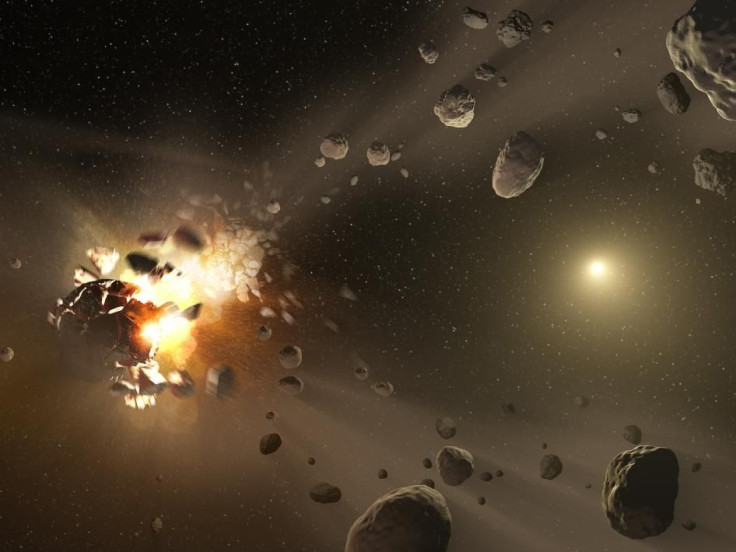NASA Asteroid Tracker: 4 Asteroids To Zip Past Earth Wednesday
KEY POINTS
- Four asteroids will safely fly past Earth on Wednesday
- The largest of the four asteroids is about as tall as the Arc de Triomphe in France
- None of the near-Earth asteroids are included in the European Space Agency's Risk List
Four asteroids will safely fly by Earth this Wednesday, according to NASA's Center for Near-Earth Object Studies (CNEOS). One of the near-Earth asteroids (NEAs) to zip by is estimated to be as tall as the Arc de Triomphe in Paris, France, which stands at 160 feet.
CNEOS' Close Approach Data Table revealed that the first asteroid will make its flyby at a distance of 960,000 miles away from Earth on Wednesday at 2:10 a.m. EDT.
The NEA, identified as 2020 TR5, has a diameter of 108 feet — about twice the height of the Hollywood sign in California, which stands at 49 feet. This Apollo asteroid will safely pass by the planet at a speed of 5 miles per second.
After the first asteroid, the second NEA, 2020 TS5, will enter Earth's vicinity and zip by the planet at 5:49 a.m. EDT. The space rock is estimated to have a diameter of 111 feet, about the same size as 2020 TR5, according to CNEOS' data.
Aside from its size, 2020 TS5 also shares the same classification as 2020 TR5. Both belong to the Apollo family of asteroids due to their Earth-crossing orbits, which intersect that of the planet's at a certain point.
The third, and also the largest, asteroid to make its flyby on Oct. 28 is 2020 UN1 — a 160 feet NEA that will zoom past Earth at 8:13 a.m. EDT. Despite its size, the asteroid is not on the European Space Agency's (ESA) Risk List, which means it is not expected to hit Earth during its upcoming flyby.
The asteroid 2020 UN1 will be flying by Earth at a distance of 981,000 miles away from the planet's surface. Its next close approach will happen 13 years from now on Oct. 15, 2033.
The last of the four asteroids to make its way to Earth's vicinity on Wednesday is 2020 TM7. Only slightly smaller in size than 2020 UN1, this NEA has a diameter of 150 feet. An asteroid this big would be as tall as the Chicago Water Tower in Illinois, which stands at 154 feet.
The asteroid 2020 TM7 will be zipping by at 10:38 a.m. EDT at a distance of around 1.2 million miles away from Earth.
None of the asteroids have been included in the ESA Risk List.

© Copyright IBTimes 2024. All rights reserved.





















